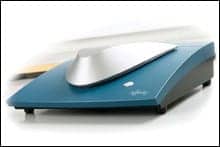Washington, DC — While a recent study shows that those who play musical instruments have a decrease in age-related hearing loss, other occupational safety studies still show that certain professional musicians remain at risk for hearing loss from playing their instruments.
A study led by Canadian researchers has found the first evidence that lifelong musicians experience less age-related hearing problems than non-musicians. However, that referred to age-related hearing loss, not noise-induced hearing loss.
In this latest study published in the International Journal of Occupational Safety and Ergonomics (JOSE), researchers assessed exposure to sound and the risk of noise-induced hearing loss in orchestral musicians.
Sound pressure level was measured in one opera and three symphony orchestras, and musicians were also given questionnaires. On the basis of that data, the risk of noise-induced hearing loss was assessed according to occupational standards.
The results: Classical orchestral musicians are usually exposed to sound at equivalent continuous A-weighted sound pressure levels of 81−90 dB (10th−90th percentiles), for 20−45 hours (10th−90th percentiles) per week.
The researchers concluded that occupational exposure to such sound levels over 40 years of employment might cause hearing loss (expressed as a mean hearing threshold level at 2, 3, 4 kHz exceeding 35 dB) of up to 26%. Musicians at greatest risk are those who played the horn, trumpet, tuba, and percussion.
In a related study, researchers measured the effect of earplugs on sound level and spectrum during musical performances. Seven soloists and three music ensembles performed four pieces of music with musician’s earplugs worn and not worn. When wearing silicon, custom-molded earplugs with acoustic filters, sound pressure levels experienced by the performers were reduced by 5 to 15 dB. The effect was the greatest for brass players. However, the authors note that similar changes for woodwind, percussion, and string instruments were less noticeable than for brass instruments; they were more than 5 dB for 1/3-octave spectra and no more than 2 dB for A-weighted SPL.
SOURCE: International Journal of Occupational Safety and Ergonomics




